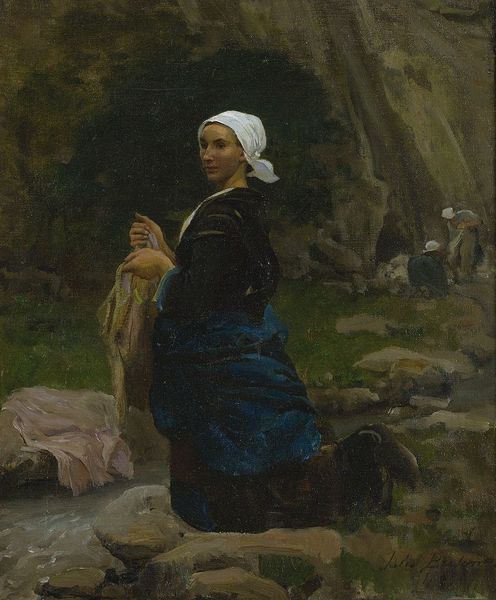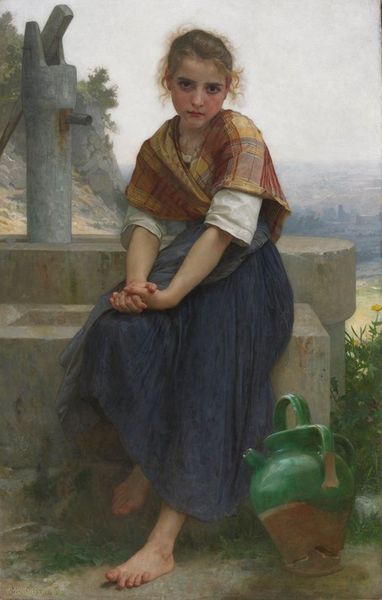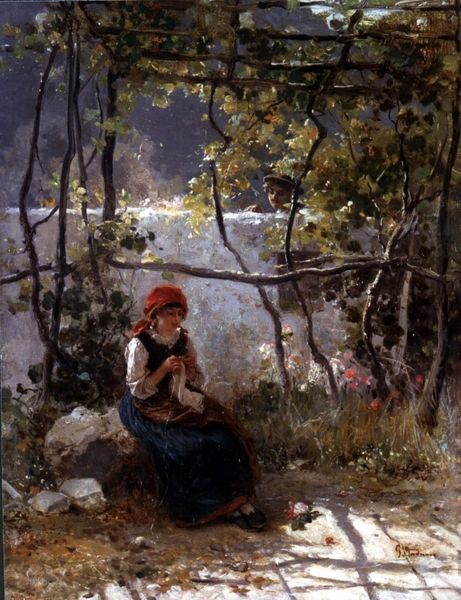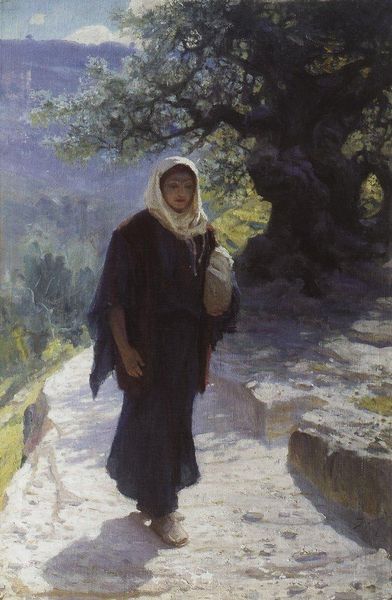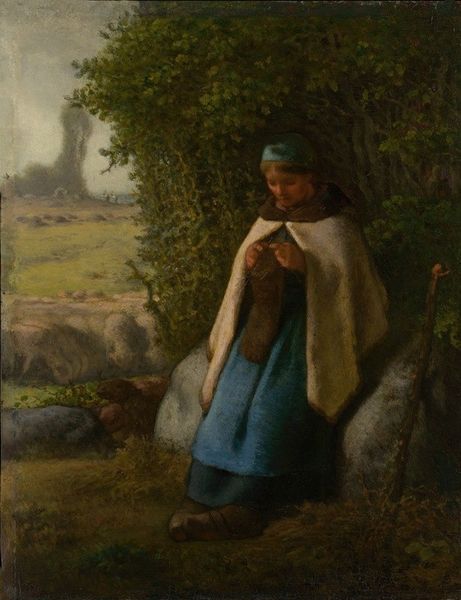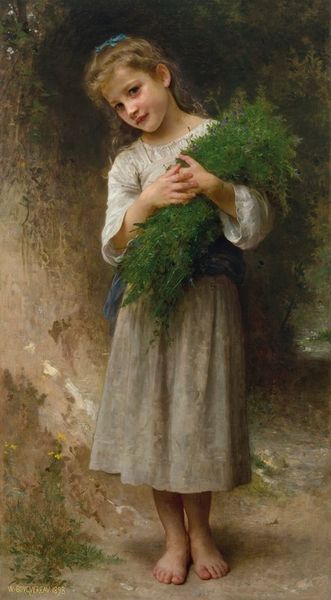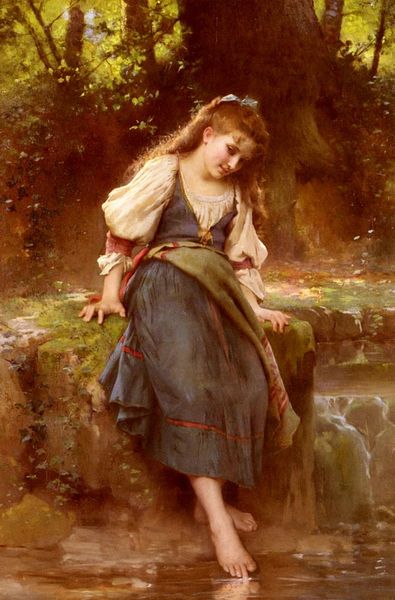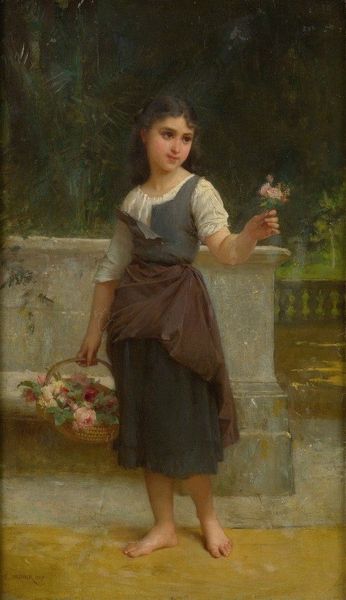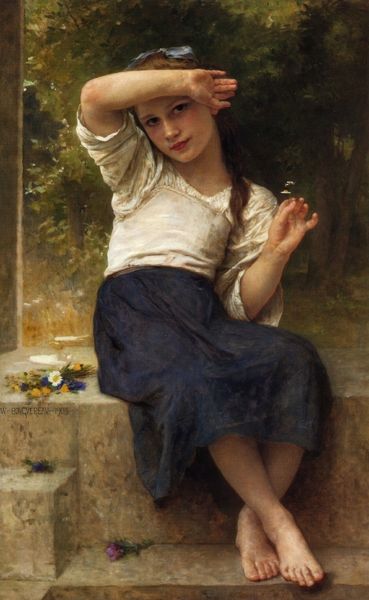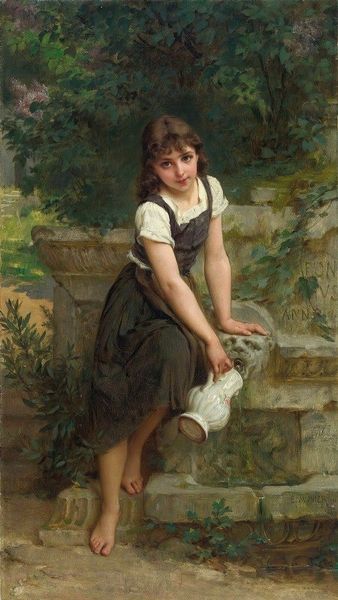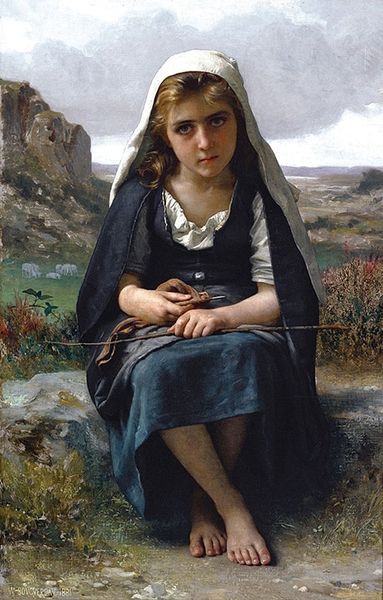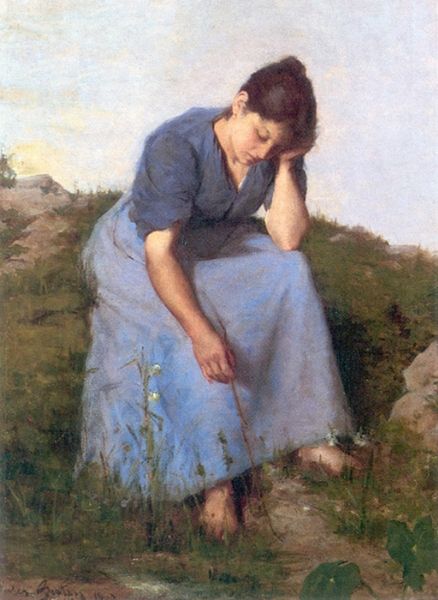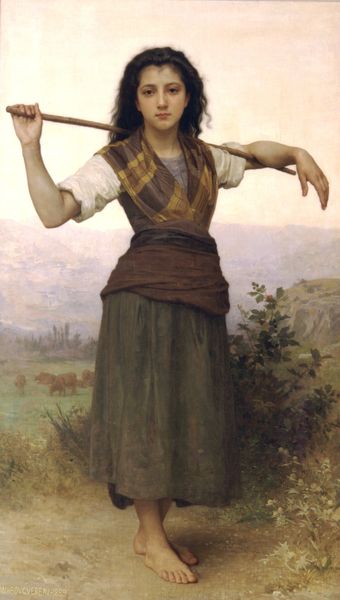
Dimensions: 32 x 25.4 cm
Copyright: Public domain
Curator: Before us hangs Jules Breton's 1870 oil painting, "Spinner." Editor: A melancholy pervades this work. The downward gaze of the figure, the muted greens and browns—it all suggests a quiet resignation. Curator: Indeed. The composition centers on the figure, yet it's the interplay of light and shadow across her form and clothing that truly arrests the eye. Notice the carefully constructed textures achieved through subtle variations in the application of pigment. Editor: The spindle itself is pregnant with meaning. Spinning, weaving, and the threads that bind – archetypal symbols of fate, the passage of time, and even female destiny. Curator: Quite right. And how the verticality of the spindle contrasts with the horizontal line created by the stone she is perched upon. Such visual tensions enrich the piece. Editor: I’m drawn to the headscarf too. It's simple, yes, but it speaks to humility, tradition, and perhaps a veiled sense of personal identity. This is a rural worker, presented not with heroic grandeur but with quiet dignity. Curator: Breton’s brushwork, however, seems almost to oscillate between Realist observation and Romantic idealization. We see this in the smooth finish he has rendered in her face versus the raw earth around her. Editor: I concur, this juxtaposition adds a dimension to how we approach the sitter’s subjectivity and social conditions. It’s a fascinating dance between what is and what is meant to be, echoing universal anxieties of change and progress. Curator: Indeed, after contemplating this work, my appreciation deepens for the artist’s conscious balancing of pictorial elements to reveal underlying meanings. Editor: And for me, Breton's "Spinner" becomes a lens through which we may observe, recognize, and respect the beauty of quiet moments and enduring symbols.
Comments
No comments
Be the first to comment and join the conversation on the ultimate creative platform.
